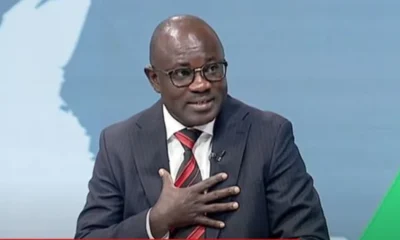More often than not, when people are discuss healthcare issues, though patients are the most critical member of stakeholders, their issues are discussed as for those needing help and not those who can help in better health outcomes.
It is interesting that hardly do we hear policy makers speaking like they are, can be or have ever been patients and so they provide policies that even with time can be detrimental or retrogressive even for them when they become patients.
The role and importance of patients in the broad spectrum of healthcare matters cannot be ignored. The more patients – current or past, are engaged in decisions making processes, the better it is for progressive development in the healthcare sector. Theirs is experiential and not theoretical and can and do give a clearer picture of the pros and cons of various issues in the sector, whether at a macro or micro level.
Patient engagement starts from an individual level to national level. On a small scale, it involves the involvement of patients/potential patients in acquiring information regarding diseases, their symptoms, illnesses and treatment/intervention options and taking decisions on the best option. On a more macro level, patient engagement includes interactions between policy and decision makers and families, communities and teams of medical personnel on the aforementioned topics. Engaging population as a preventive measure yields great benefits that help curb diseases or the intensity if one falls sick.
Jayesh Saini says he has seen greater participation of patients in decisions on what services they should receive and in what manner, noting that it has made the service providers – whether the medical facilities or the insurers to not only think of their bottom-line as key factor but also the expectations of the patients. He alluded to the fact that with increase of communication through social media, people now express their encounters with service providers and this has had effects on how services are delivered. With time, even health packages are discussed with recipients being very critical player. It is now common to find service recipients rejecting packages which they feel are too little for too much a fee and negotiations have become common place. It is no longer maximum profits for providers at the detriment of the recipient of the services.
Patient engagement has greatly helped break the notion that because medics are experts, patients must receive whatever they are handed. The interactions even with their primary care takers has helped, for example change regimes of medications with better health outcomes. This kind of patient engagements have been found to help reduce medical bills, visits to health facilities, hospitalization, onset of chronic conditions, emergency cases and even prevent loss of organs or life as the provider and recipient work in a partnership for best outcomes.
Jayesh Saini noted that services providers, whether physicians or facilities with good patient engagements tend to have a higher patient population due to good word of mouth recommendations. He however pointed out that though this is an ideal situation, it does not always work out. One of the challenges to this engagement is normally due to time factor. Having discussions with a patient at a time can be time consuming and this is normally limited considering the long queues that are common in health facilities especially for outpatient services. The patients who are in the queue do not make things better as they complain about doctors taking too long with the patients. At the same time, the services providers have to either see fewer patients or engage more personnel if ideal patient engagement was to be reached. This is a financial and resources requiring decision that has to be considered seriously to determine if it makes economic sense for the provider. This can give a negative rating for the facility. He says the masses needed to be educated on patient engagement and advised on expected turnaround times so that they can have patience. This would include information regarding interruptions if there is a life-threatening emergency. It has been found that the most effective patient engagement plans work with specific people groups (such as a cardiologist who deals only with heart related conditions) and for physicians who work on appointment basis with a specified number of patients per given time. The advantage is that with this kind of people, the consultations are more intimate, the patients will tend to be loyal, keep appointments and therefore reduced visits to the clinic and thereby enabling more patients at different dates.
Besides engagement patients at the point of service delivery, they can also be involved during enrolment especially into insurance covers. This can be done to groups instead of to individual cases. Corporates can also require of their service providers to provide in-house patient engagement. This can be general or disease-based engagements. Where there is observed need for individualized engagement, arrangements are made during such meetings. Health talks have especially been found to be beneficial as individuals recognize and corelate symptoms which they have experienced and thus pursue clinical and other investigations to either rule out or confirm a suspected condition and have proper measures taken either way. In the confines of private rooms in some organizations, patients who may be having psychological or emotional issues are taken care on in such engagements with medics – psychologists or psychiatrists while they still continue with their work therefore allowing them not to feel excluded.

 General News1 week ago
General News1 week ago
 General News4 days ago
General News4 days ago
 Politics4 days ago
Politics4 days ago
 General News2 days ago
General News2 days ago












